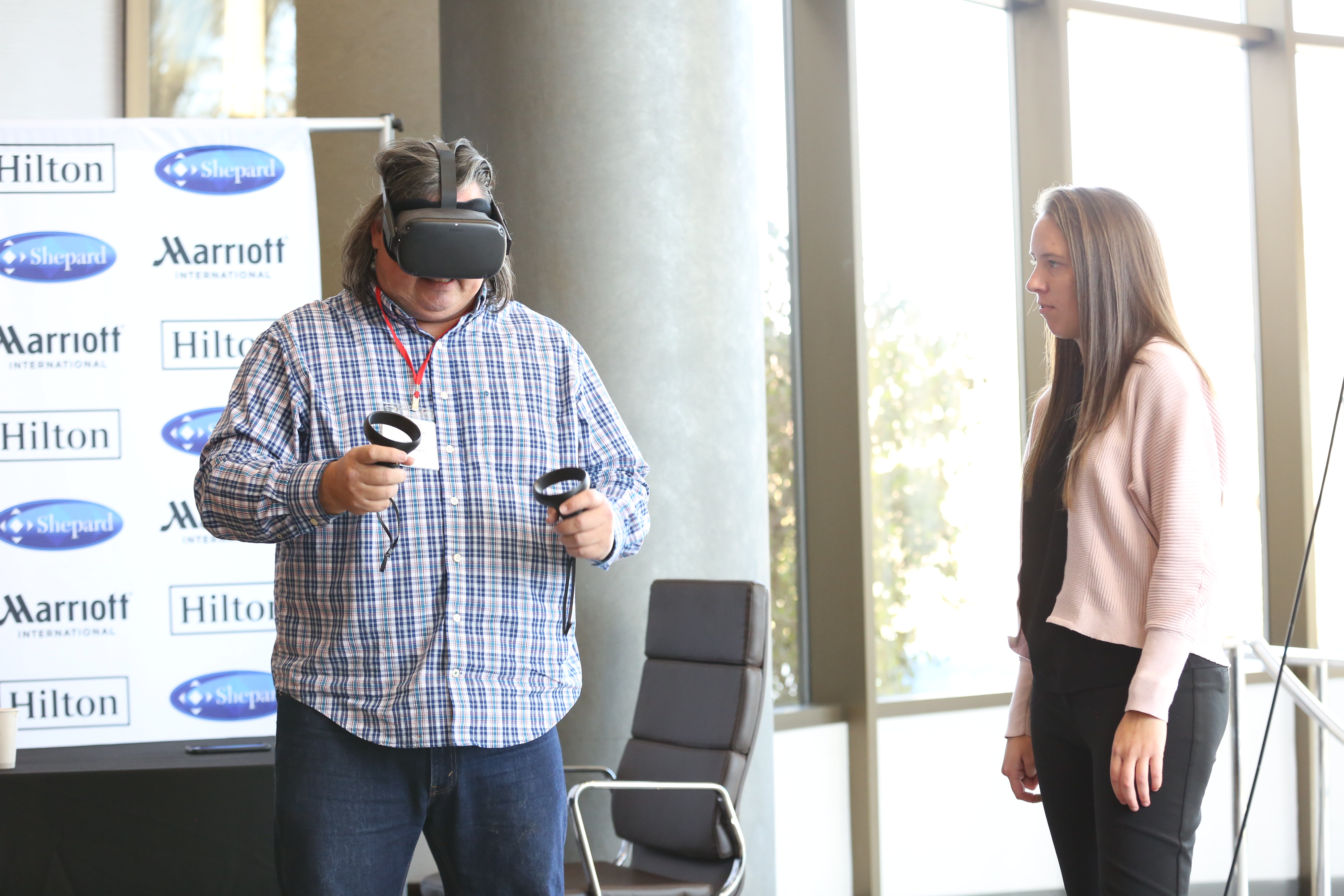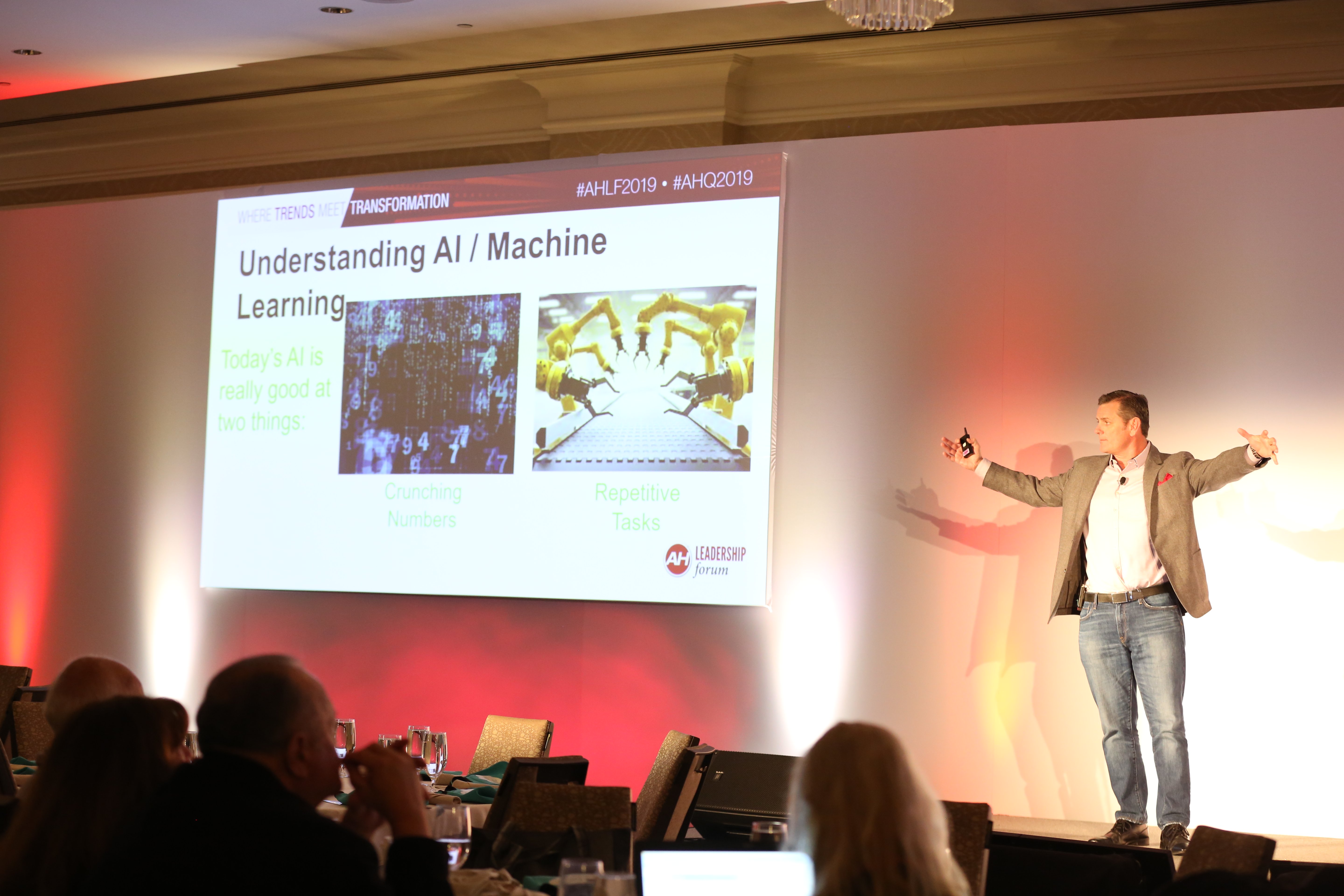Association leaders focus on better use of technology for meetings, communication, and the member experience
After an inspirational first day of programming at AH’s 2019 Leadership Forum, association leaders returned for a second day of speakers discussing everything from improving the member experience, hosting better meetings, and improving education delivery, all through the intelligent use of technology.
Where Digital Meets Communication

Author Erica Dhawan started things off with her session, “Get Big Things Done: The Power of Connectional Intelligence.” She painted a picture most professionals know all too well: two colleagues communicating, albeit unclearly, about a problem, which spirals, costing hours and energy from both parties. While attendees nodded along, Dhawan noted that digital communication comes at the expense of the nonverbal communication that builds teams, creating a sense of disengagement. She cited some critical statistics from a Harvard Business Review study surrounding the problems with digital communication in the workplace:
- Innovative behaviors fall by over 90%
- Trust declines 80%
- Role and goal clarity decline by 75%
- Organizational satisfaction and commitment drop by 50%
What are leaders to do? Digital communication is here to stay, so, according to Dhawan, leaders must learn to incorporate what she calls digital body language into their communication with others. Dhawan classifies digital body language as the cues and signals we send that make up what we actually mean. She outlined several considerations, such as the order of email recipients, the use of punctuation, response time, and even the use of emojis as factors in crafting digital body language.
The Future is Now with VR/AR
Digital communication took a leap forward to focus on education delivery during the session by Kevin Anderson, executive producer at Steelehouse, called “Transforming Recruitment, Marketing and Training with Immersive Technology - Virtual Reality (VR) and Augmented Reality (AR).” 
After outlining the difference between VR (when a user is immersed audibly and visually in a completely different environment) and AR (when digital information is overlaid onto the real world). These technologies are known for their use in gaming, but Anderson notes that there is incredible potential for associations to leverage VR/AR for education and training. Decreasing costs make VR/AR a practical way for associations to provide scalable, on-demand experiential training. Anderson left attendees with a call to action: cut through the clutter of various education offerings with something entirely new with incredibly high value by employing VR/AR technology for education.
One AH client partner, NADCA, used VR to show members at their annual meeting how it can be used for field training. Newer technicians in the air duct cleaning industry had an opportunity to experience a job site before actually going to a job site—it introduces them to a commercial mechanical room and walks them through the process of identifying components of the system all while wearing the headset and sitting in the comfort of a cushioned-swivel chair.
Exploring Artificial Intelligence via Chatbots
Continuing the conversation around ways associations can implement new technologies to enhance the member experience, Robert H. Caldwell, founding partner at 42Chat, presented his session, “The Future of AI Chatbots: Another fad or customer service revolution?” Caldwell addressed the elephant in the room: that some technologies are just exciting new fads that don’t have staying power and, worse, don’t really do anything to improve the delivery of services and benefits to members. However, according to Caldwell, chatbots present an entirely new opportunity to provide next-level customer service right where members want to receive it: on their phones.
Chatbots are a form of artificial intelligence that uses language comprehension to provide answers to everything from basic to advanced questions, and directs users to a live person when they determine they are unable to answer a user’s request. Caldwell is a proponent for deep conversational chatbots, which are able to understand all the ways humans actually ask questions and feel like talking to a real person.
Caldwell called out other ways associations connect with members and their weaknesses:
- Members will delete a conference app after the meeting
- They may unsubscribe or block emails to streamline their inbox
- Websites require users to visit and remember what they needed to do there
But phones, he says, and particularly texting, is a must-have addition to an association’s customer service repertoire that takes advantage of an always-open door to communicate with members.
Transforming for the Future
After a short break and a roundtable to focus on foresight and problem-solving with peers, attendees finished the day with a final session by Michael Dominguez, president and CEO of ALHI, a global sales service for prestigious hospitality and travel brands. He kicked off his session on a somber note: 40% of associations will not be relevant in 5 years. So how do you ensure your association thrives in this age of change?
 The single most important thing associations can do, according to Dominguez, is to take their cues from consumer life, as he believes that what happens in consumer life is going to drive the expectations for meetings in the future. He urged attendees to think of how they can personalize events and content, and to be more open to connecting with younger members to better understand their behavior and expectations. He also noted that associations need to shift focus to increasing their influence, as influence can be monetized and will quickly become the main driver of revenue for associations. Dominguez cited the changing consumer mentality of paying for value, but not paying just for access. This new mentality forces associations to rethink the association model to determine exactly how their influence can make them valuable, and therefore worthy of their members’ dollars.
The single most important thing associations can do, according to Dominguez, is to take their cues from consumer life, as he believes that what happens in consumer life is going to drive the expectations for meetings in the future. He urged attendees to think of how they can personalize events and content, and to be more open to connecting with younger members to better understand their behavior and expectations. He also noted that associations need to shift focus to increasing their influence, as influence can be monetized and will quickly become the main driver of revenue for associations. Dominguez cited the changing consumer mentality of paying for value, but not paying just for access. This new mentality forces associations to rethink the association model to determine exactly how their influence can make them valuable, and therefore worthy of their members’ dollars.




